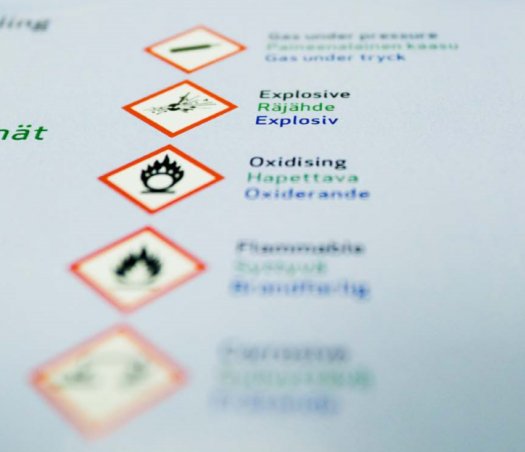Every dairy farm uses chemicals in one way or another. They are essential for the production of healthy milk. At the same time, they have to be managed safely so as to protect human health and the environment.
ECHA is an agency of the European Union, the European Chemicals Agency. ECHA works for the safe and sustainable use of chemicals, for the benefit of citizen and the environment. ECHA handles the market authorisations of chemicals in EU.
There are several areas of expertise covered by ECHA:
-
The REACH regulation: establishing guidance for Registration, Evaluation, Authorisation and Restrictions of Chemicals,
-
The CLP regulation: defining Classification, Labelling and Packaging rules,
-
The BPR is the Biocidal Products Regulation.

The REACH regulation
REACH is a regulation of the European Union, adopted to improve the protection of human health and the environment from the risks that can be posed by chemicals. It also promotes alternative methods for the hazard assessment of substances in order to reduce the number of tests on animals. REACH establishes procedures for collecting and assessing information on the properties and hazards of substances.
ECHA receives and evaluates individual registrations for their compliance, and the EU Member States evaluate selected substances to clarify initial concerns for human health or for the environment. Authorities and ECHA's scientific committees assess whether the risks of substances can be managed.
If the risks cannot be managed, authorities can restrict the use of substances in different ways. In the long run, the most hazardous substances should be substituted with less dangerous ones.
Farmers are used to handle chemicals every day, which tend to lower the precautions measures taken around the use of corrosive/explosive or even carcinogenic chemicals. How many percent of the farmer are not wearing gloves or goggles when handling the highly concentrated milking machine detergents?
What about the use of Formaldehyde in hoof bath? Almost everyone is aware of the carcinogenicity of this product, however for economical reason, this active substance is still the most common product used in hoof bath.
The CLP regulation
The Classification, Labelling and Packaging (CLP) Regulation ((EC) No 1272/2008) is based on the United Nations’ Globally Harmonised System (GHS) and its purpose is to ensure a high level of protection of health and the environment, as well as the free movement of substances, mixtures and articles.
The CLP Regulation amended the Dangerous Substances Directive (67/548/EEC (DSD)), the Dangerous Preparations Directive (1999/45/EC (DPD)) and Regulation (EC) No 1907/2006 (REACH), and since 1 June 2015, is the only legislation in force in the EU for classification and labelling of substances and mixtures.
CLP is legally binding across the Member States and directly applicable to all industrial sectors. It requires manufacturers, importers or downstream users of substances or mixtures to classify, label and package their hazardous chemicals appropriately before placing them on the market.
One of the main aims of CLP is to determine whether a substance or mixture displays properties that lead to a hazardous classification. In this context, classification is the starting point for hazard communication.
A hazard label is made up of specific symbols (known as “pictograms”) and warnings.
Thanks to homogenous labelling and regular training, the danger of the chemicals is now clearly shown to anybody getting involved in chemical use.

The Biocidal Products Regulation
The Biocidal Products Regulation (BPR, Regulation (EU) 528/2012) concerns the placing on the market and use of biocidal products, which are used to protect humans, animals, materials or articles against harmful organisms like pests or bacteria, by the action of the active substances contained in the biocidal product. This regulation aims to improve the functioning of the biocidal products market in the EU, while ensuring a high level of protection for humans and the environment.
All biocidal products require an authorisation before they can be placed on the market, and the active substances contained in that biocidal product must be previously approved.
Biocidal products are classified in 22 product types grouped in four main application areas:
-
disinfectants, for home and industrial use;
-
preservatives, for manufactured and natural products;
-
pest control products;
-
other specialist biocidal products, e.g. antifouling products.
The active substance to be used in a biocidal product or to treat an article must be approved (assessed positively for its efficacy and safety) in the relevant product-type at EU level. Following this procedure, the biocidal product requires an authorisation at national or EU level before it can be made available on the market (e.g. sold) or used.
The BPR is an on-going process, which build a huge amount of data around the use of chemicals in the most relevant ratio regarding the dose used in practice versus the efficacy and versus the residues and toxicity.
Conclusion
These 3 directives are shaping the chemical market available for dairy farms. Given the cost of such a regulation, some products will simply disappear from the market. On the other hand, refine know-how accompanies the implementation of this chemical regulation. Best practices will be strengthened and share down to the end-user, which will benefit the entire industry.
Source: https://echa.europa.eu/home
